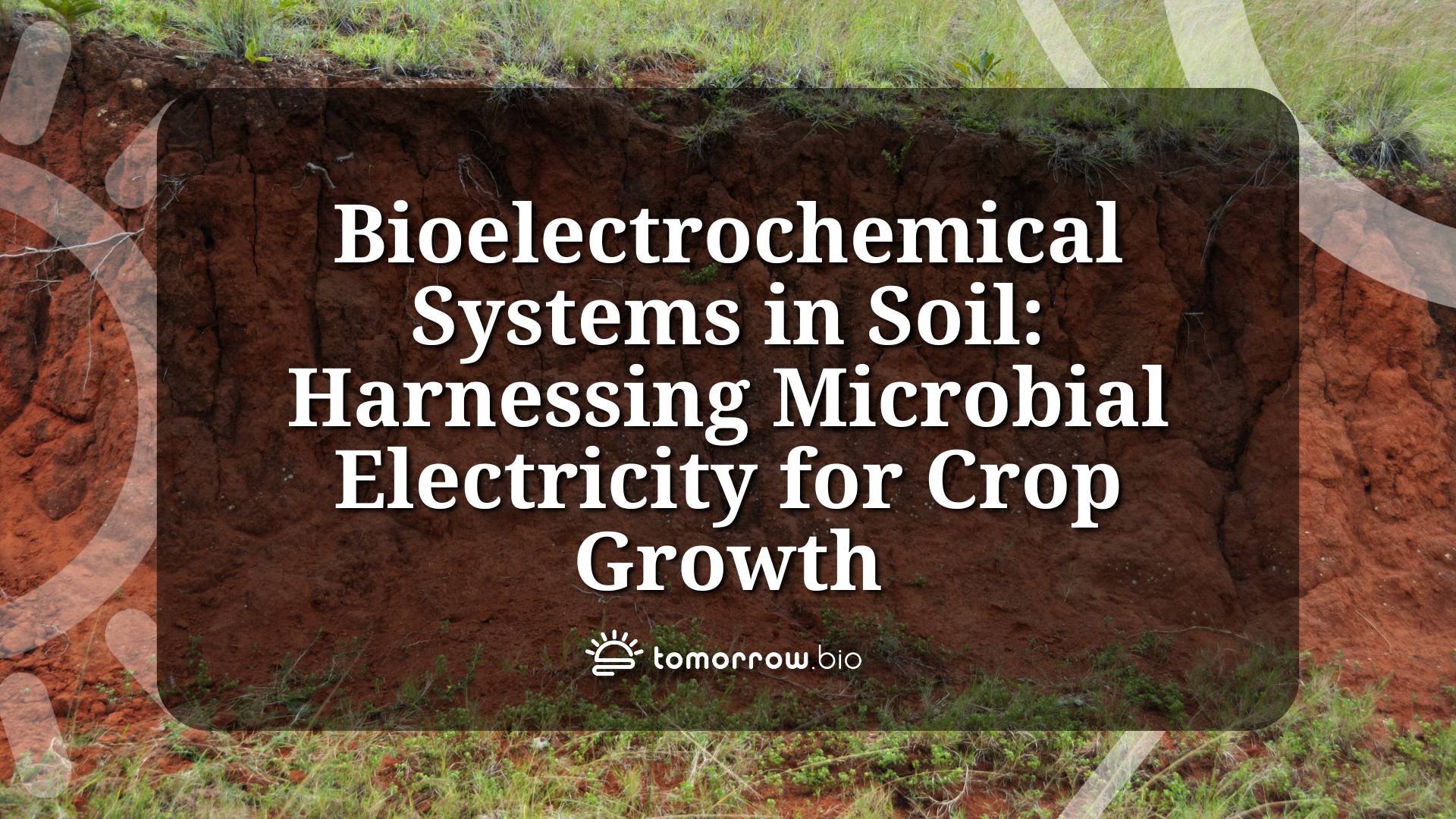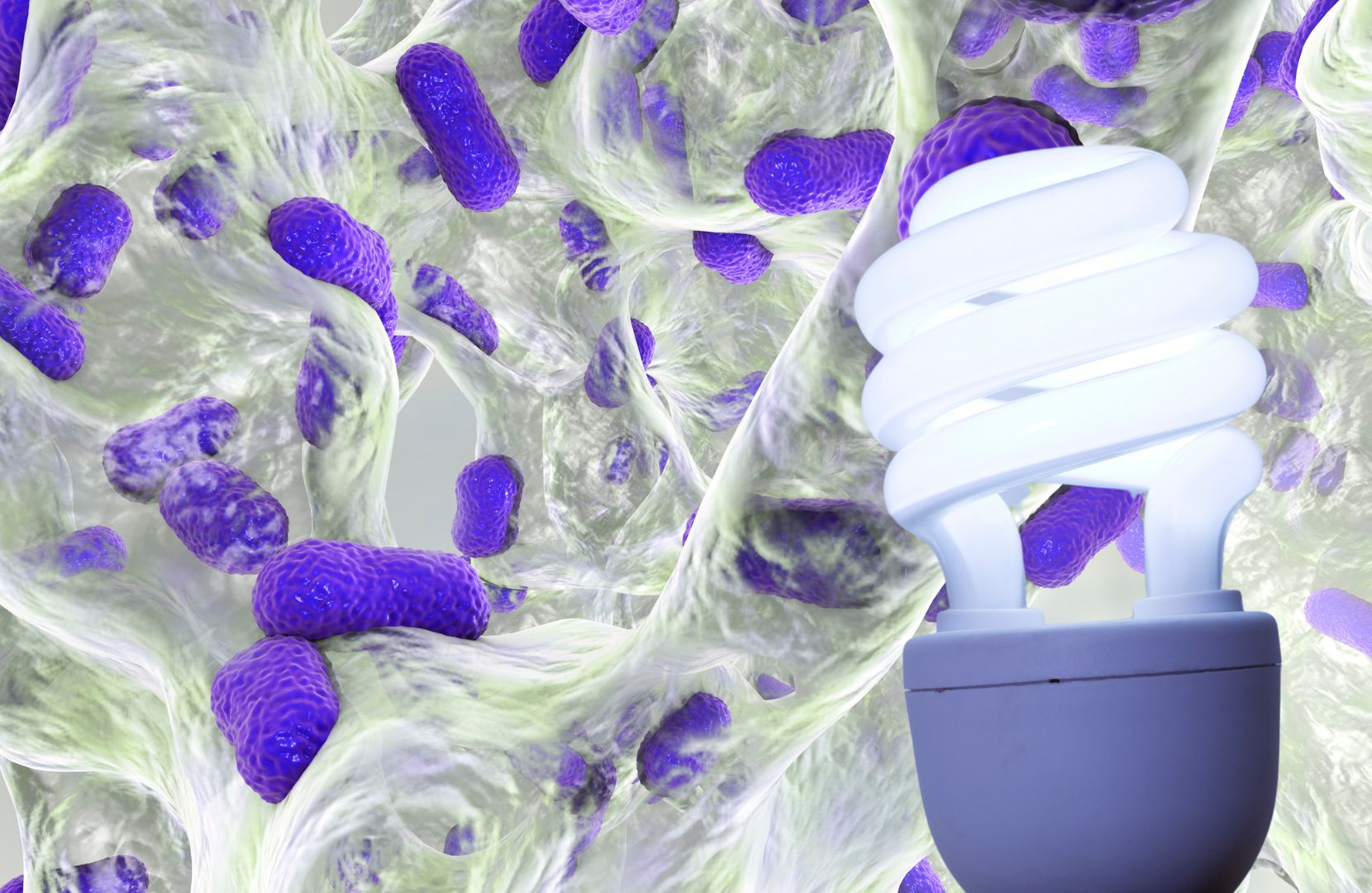


Uncover the fascinating world of bioelectrochemical systems in soil and learn how microbial electricity can revolutionize crop growth.

In recent years, there has been growing interest in the field of bioelectrochemical systems and their potential application in agriculture. Bioelectrochemical systems, also known as microbial fuel cells, have the fascinating ability to harness the electrical energy generated by microorganisms in soil. This unique technology holds great promise for improving crop growth and sustainability. Let's dive into the world of bioelectrochemical systems and explore their impact on agriculture.
Before we delve deeper into the topic, it is essential to understand the fundamental concepts behind bioelectrochemical systems. These systems utilize the natural phenomenon of microbial electricity, where certain microorganisms are capable of producing and transferring electrons as part of their metabolic processes. By harnessing this microbial electricity, bioelectrochemical systems provide a sustainable and eco-friendly approach to various applications.
Let's explore the fascinating world of bioelectrochemical systems and uncover the science behind their functionality, as well as the crucial role of microorganisms in these systems.
At the heart of bioelectrochemical systems lies a unique process called extracellular electron transfer. This process enables certain bacteria and archaea to release electrons from their metabolic activities, effectively creating an electric circuit within the system. The electrons generated can then be captured, harnessed, and utilized for various purposes, such as powering electrical devices or facilitating chemical reactions.
Extracellular electron transfer occurs through the formation of specialized structures called microbial nanowires. These nanowires act as conductive pathways, allowing the flow of electrons from the microorganisms to the electrode surface. The intricate mechanisms behind the formation and functioning of microbial nanowires are still being explored, but their discovery has revolutionized the field of bioelectrochemical systems.
Furthermore, bioelectrochemical systems can be categorized into two main types: microbial fuel cells (MFCs) and microbial electrolysis cells (MECs). MFCs generate electricity by oxidizing organic matter, while MECs produce hydrogen gas or other valuable chemicals through the electrolysis of organic compounds. The science behind these systems is continually evolving, with researchers striving to improve their efficiency and expand their applications.
Microorganisms play a crucial role in the functionality of bioelectrochemical systems. Certain bacteria, known as exoelectrogens, have the remarkable ability to directly transfer electrons to an electrode surface. These microorganisms form a biofilm on the electrode, creating a conductive network that facilitates electron flow. The biofilm acts as a protective shield, allowing the exoelectrogens to thrive in the harsh conditions of the system.
Moreover, the interactions between different microorganisms within bioelectrochemical systems are complex and multifaceted. Fermentative bacteria break down complex organic compounds into simpler molecules, releasing electrons and other byproducts. These electrons can then be utilized by exoelectrogens for electricity generation or chemical production. Methanogens, on the other hand, consume the byproducts of exoelectrogens and produce methane gas, which can be harvested as a valuable energy source.
Understanding the intricate microbial communities within bioelectrochemical systems is crucial for optimizing their performance. Researchers are exploring various strategies to enhance the activity and efficiency of exoelectrogens, such as genetic engineering and biofilm engineering. By unraveling the mysteries of these microorganisms, scientists aim to unlock the full potential of bioelectrochemical systems and pave the way for sustainable energy and resource management.

Soil, the foundation of agriculture, also acts as a natural bioelectrochemical system. Its complex matrix of microorganisms, organic matter, and minerals creates an ideal environment for the generation and transfer of microbial electricity. Understanding the intricate relationship between soil and electricity is crucial for harnessing the full potential of bioelectrochemical systems in agriculture.
Soil harbors diverse microbial communities with the ability to produce and transfer electrons. These microorganisms, present in the rhizosphere and surrounding soil, interact with plant roots and organic matter, influencing nutrient cycling and plant health. Soil acts as a natural bioelectrochemical system, with the potential to enhance crop growth and overall soil health through electron transfer processes.
Within the soil, microorganisms such as bacteria, fungi, and archaea form intricate networks that facilitate the flow of electrons. These microorganisms engage in a process called extracellular electron transfer, where they release electrons from their metabolic activities into the surrounding environment. These released electrons can then be captured and utilized by other microorganisms or even plants.
The rhizosphere, the region surrounding plant roots, is particularly rich in microbial activity. Plant roots release organic compounds, known as root exudates, which serve as a source of energy for soil microorganisms. As microorganisms consume these root exudates, they produce electrons as byproducts, which can be harnessed for various purposes.
Furthermore, the soil matrix itself plays a crucial role in facilitating electron transfer. The minerals and organic matter present in the soil provide conductive pathways for the movement of electrons. This allows for efficient electron transfer between microorganisms and the surrounding environment.
The fascinating aspect of microbial electricity lies in its potential to impact soil health positively. The electrical current generated by microorganisms can stimulate microbial activity and nutrient transformations in the soil. This enhanced microbial activity can lead to improved nutrient availability, reduced soil-borne diseases, and enhanced soil structure. Harnessing microbial electricity in soil has the potential to create a self-sustaining ecosystem that supports healthy crop growth.
When microorganisms release electrons into the soil, it creates a flow of electrical current. This current can stimulate the growth and activity of beneficial microorganisms, such as nitrogen-fixing bacteria and mycorrhizal fungi. These microorganisms play crucial roles in nutrient cycling, helping plants access essential elements like nitrogen and phosphorus.
In addition to nutrient cycling, microbial electricity can also influence the soil's physical properties. The electrical current can promote the formation of aggregates, which are clusters of soil particles held together by organic matter and microbial activity. Aggregates improve soil structure, allowing for better water infiltration and root penetration. This, in turn, enhances the overall resilience and fertility of the soil.
Moreover, the release of electrons by microorganisms can have antimicrobial effects. Certain microorganisms in the soil are pathogenic and can cause diseases in plants. However, the presence of electrical current disrupts their growth and survival, reducing the incidence of soil-borne diseases. This natural defense mechanism provided by microbial electricity can significantly benefit crop production and reduce the need for chemical interventions.

The utilization of bioelectrochemical systems in agriculture has demonstrated promising results in enhancing crop growth and productivity. By leveraging the electrical energy generated by microorganisms, these systems offer unique opportunities for sustainable farming practices.
Studies conducted on various crops have shown that bioelectrochemical systems can significantly improve crop yield. The electrical stimulation provided by these systems promotes root growth, nutrient uptake, and overall plant vigor. Additionally, the ability of bioelectrochemical systems to enhance microbial activity in the rhizosphere leads to improved soil fertility and nutrient cycling, further enhancing crop growth and yield.
Bioelectrochemical systems hold immense potential for transforming the future of farming. With their ability to provide sustainable energy and enhance soil health, these systems can revolutionize agriculture practices worldwide. By harnessing microbial electricity, farmers can reduce their reliance on traditional energy sources and adopt more environmentally friendly approaches, ensuring the long-term viability of our food production systems.
While bioelectrochemical systems offer numerous benefits, there are also challenges that need to be overcome for their widespread implementation in agriculture.
Developing efficient and cost-effective bioelectrochemical systems is a significant challenge. The design and optimization of electrodes, microbial communities, and system configurations require careful consideration. Additionally, issues such as electrode fouling, voltage instability, and system scalability need to be addressed to ensure the practical application of these systems in real-world agricultural settings.
Researchers and engineers are actively exploring innovative approaches to overcome the challenges associated with harnessing microbial electricity. Advancements in electrode materials, system design, and microbial engineering hold promise for more efficient and scalable bioelectrochemical systems. Collaborative efforts between different scientific disciplines and the agricultural community are essential for finding practical solutions and accelerating the adoption of bioelectrochemical systems in agriculture.
When considering the implementation of any new technology in agriculture, it is vital to assess its environmental implications and potential risks.
Bioelectrochemical systems align with the principles of sustainable agriculture. By harnessing microbial electricity, these systems provide a renewable and clean energy source, reducing reliance on fossil fuels. Furthermore, the enhancement of soil health through the application of bioelectrochemical systems promotes sustainable nutrient management, reduces chemical inputs, and mitigates the impact of agriculture on the environment.

As with any emerging technology, bioelectrochemical systems come with their share of potential risks. Research is ongoing to evaluate the potential effects of long-term system implementation on soil microbial communities, water ecosystems, and overall ecosystem health. It is essential to implement appropriate mitigation strategies, such as carefully monitoring system parameters, conducting adequate risk assessments, and considering potential environmental impacts before widespread adoption.
Bioelectrochemical systems show tremendous potential for revolutionizing agriculture and enabling sustainable crop growth. By harnessing the power of microbial electricity, these systems offer opportunities for energy-efficient farming practices, improved soil health, and increased crop yield. However, further research and development are needed to optimize system designs, overcome technical challenges, and ensure environmental sustainability. With continued efforts and collaboration, bioelectrochemical systems could play a vital role in shaping the future of agriculture, paving the way for a more sustainable and resilient food production system.